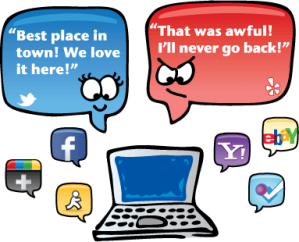 Your customers are making buying decisions every day based on one factor: who comes to mind. Whether they’re choosing a restaurant for date night, planning a wedding, birthday shopping or looking for entertainment when the rambunctious cousins come for a visit, the decision making process is the same. Suggestions are batted around based on businesses that come to mind. So how you get your brand to pole vault into your customer’s subconscious?
Your customers are making buying decisions every day based on one factor: who comes to mind. Whether they’re choosing a restaurant for date night, planning a wedding, birthday shopping or looking for entertainment when the rambunctious cousins come for a visit, the decision making process is the same. Suggestions are batted around based on businesses that come to mind. So how you get your brand to pole vault into your customer’s subconscious?
Who Comes to Mind? Defining Top of Mind Awareness
What does it take to rank in the top of the class? When it comes to top of mind awareness brands will qualify under one of three conditions:
1. A Perennial Favorite. Everyone has a favorite restaurant, clothing store, hair salon, etc. The only way to increase your chances of getting in under this condition is to consistently provide great products and customer service to all your customers. You will make the cut for some of them and become a perennial favorite.
2. A Lingering Bad Taste. You’ve heard the phrase, “I don’t know what I want, but I know what I don’t want.” Well this is it. This is top of mind, but not in a good way. These are not your potential customers as you are only coming to mind for negative reasons. This is Santa’s naughty list and you don’t want to be on it.
3. The Right Exposure. This is the condition where you can drive the train. This is your chance for top of mind awareness, and it is within your control. The more frequently your customer is exposed to your brand, the more likely they are to do business with you. As you increase your exposure you build brand awareness.
Let me say that again. By increasing your brand exposure, you build brand awareness. That’s the ultimate goal. So what are some ways to do that?
Marketing and advertising are the most traditional ways to build brand awareness. It makes sense, right? Let me give you a little test. Shout out the first brand that comes to mind when I say pizza? How about insurance? OK, here’s a tough one. What do you think of when I say shoes? It’s a pretty safe bet that you answered with a nationally known brand name. Why? Because you encounter their advertising daily, thus dramatically increasing your exposure, and hijacking their brands to the top of your mind.
You’re probably wondering, “How can I achieve top of mind awareness if my brand isn’t as large as Dominos, and my pockets aren’t as deep as Nike?” While there is an advantage to filling broadcast media, magazines and billboards with your logo it can pull the cork on your piggy bank. But that’s not the solution I’m going to suggest.
You don’t have to take out a second mortgage to build top of mind awareness. One reason social media is gaining in popularity for advertisers is because it builds brand awareness without the expense of traditional media. But it does come with a price tag. Your time. By investing your time into building up your Facebook fan page, and talking with followers on Twitter, you can use social media to improve brand awareness. The more often you engage your fans the more familiar you become.
How to Achieve Top of Mind Awareness Using Social Media
My secret weapon for earning top of mind awareness is niche marketing. When you cast a large net you can waste a lot of time and resources in search of a big catch. But if you focus on a smaller fishing hole, and use your best lures, you’re more likely to reel in a keeper. Follow these four steps to improve your brand awareness.
1. Target a niche group of customers. Design a marketing campaign for a small group, maybe it’s your local Twitter followers, or the neighborhood that surrounds your business. A smaller, more targeted approach feels more personal, and will be easier to engage with your customers.
2. Build up brand awareness with regular communication. If you’re using social media post frequently and at different times of day to capture audience attention. Sending an email campaign? Establish a frequency and format your customers can depend on. Same goes with direct mail.
3. Seek and share feedback. Customers love to feel appreciated. Ask for their opinion on new products. Collect and share testimonials from happy clients. A new customer is encouraged to learn there are happy customers out there.
4. Reward frequency. Every business wants, dare I say needs, regular customers. So why are new clients the ones who receive the discounted rates? It’s much more difficult to bring in a new customer than it is to keep an old one. Offer a free product or discounted service to your best customers and ensure they continue coming back. The more often they visit your business, the higher you rank on top of mind awareness.
Have you discovered any marketing techniques that help rocket your business to the top? Share them in the comments!
 What do you do with a negative review?
What do you do with a negative review?
